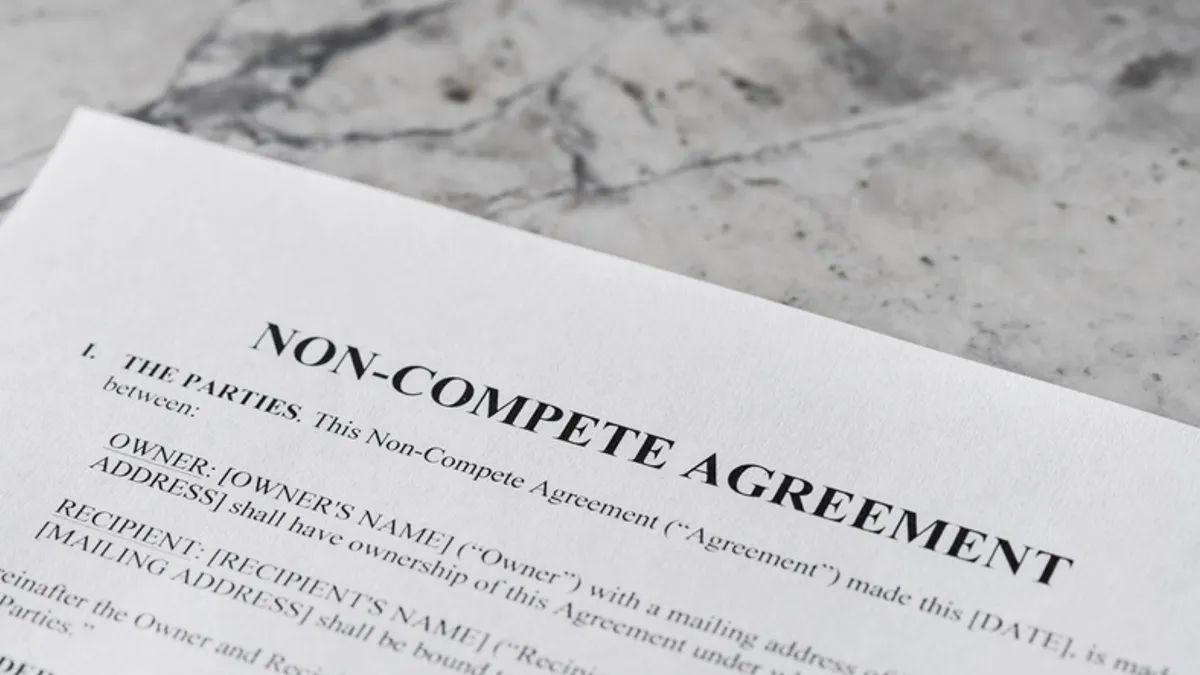Lee Jacobs, a partner at Barclay Damon in New York, has over 16 years of legal experience representing corporate clients in complex matters and on day-to-day employment issues, especially in the restaurant, hospitality and cannabis industries.
Navigating the complexities of the Fair Labor Standards Act is critical for employers, especially when it comes to determining which employees qualify as exempt from overtime. While many are familiar with “white-collar” exemptions covering executive, administrative and professional roles, misclassifications remain a significant risk.
The recent Mayfield v. U.S. Department of Labor ruling from the 5th U.S. Circuit Court of Appeals reaffirmed that both the salary and duties tests are required when classifying employees as exempt, reminding employers that exemption status isn’t determined solely by job title or pay level.
The Mayfield decision upheld the U.S. Department of Labor’s authority to use both salary and duties tests when determining exemption status. Although the court did not address the specific salary threshold, it confirmed that DOL has the power to establish such thresholds, leaving the door open for future challenges related to the salary levels themselves. This ruling underscores the importance of employers staying vigilant as noncompliance with applicable regulations could lead to significant penalties.
Reaffirming the 2-part test for exemptions
Mayfield highlighted the ongoing importance of applying the FLSA’s two-part test to determine exempt status.
The salary test requires the employees be paid at least a minimum salary to be exempt from overtime. Effective July 1, the federal minimum salary threshold increased from $684 per week ($35,568 annually) to $844 per week ($43,888 annually). It will rise again on Jan. 1, 2025, to $1,128 per week ($58,656 annually).
However, states like California and New York have stricter requirements. For example, California’s 2024 minimum salary is $66,560 annually, while New York’s salary requirements for exempt employees range from $58,458 to $62,400 per year, depending on the region, with increases scheduled through 2026.
In addition to meeting the salary threshold, employees must meet the duties test; that is, they must perform specific duties related to their exemption category (executive, administrative, professional, computer-related or outside sales). Employers need to regularly review an employee’s actual daily responsibilities, not just their title or job description, to ensure compliance with this test.
The Mayfield ruling confirmed that both the salary and duties tests are necessary to classify an employee as exempt, emphasizing the importance of proper classification to avoid legal and financial consequences.
The cost of misclassification
Misclassifying employees as exempt can expose businesses to serious financial and legal consequences. The Mayfield decision serves as a stark reminder of these risks. If employees are improperly classified, employers could be responsible for:
- Back pay. Employees who are misclassified may be entitled to back pay for unpaid overtime. Under the FLSA, this can go back up to three years, but state laws can extend this period up to six years depending on the specific circumstances and jurisdiction.
- Liquidated damages. Many states, along with the FLSA, impose liquidated damages equal to the amount of unpaid wages, doubling the financial impact for the employer.
- Legal fees and penalties. Employers can be liable for the employee’s attorney fees and other penalties imposed by state wage laws, further increasing the cost of noncompliance.
The potential financial liabilities extend beyond just unpaid wages, making proactive compliance essential for protecting a company’s bottom line and avoiding reputational damage.
Proactive Compliance: The EXEMPT Checklist
To prevent the costly consequences of misclassification, employers must take a proactive approach to reviewing employee classifications. An “EXEMPT” checklist offers a structured process for ensuring compliance with federal and state laws governing overtime exemptions.
- Evaluate roles. Regularly assess employees’ job duties to ensure they align with the FLSA exemption categories. Actual day-to-day tasks should be compared to exemption definitions, not just job titles or descriptions.
- Examine salary thresholds. Confirm that employees meet the current federal and state salary thresholds. This includes tracking salary increases at both the federal and state levels as thresholds are subject to change annually. For example, employers should plan for the 2025 federal increase to $1,128 per week and state-level increases in California and New York, which have their own schedules and nuances.
- Educate management. Train HR teams and managers to recognize when changes in job duties or salaries might affect exemption status. Roles often evolve over time, and staying aware of these shifts is essential for compliance.
- Monitor work hours. Even for exempt employees, tracking workload and overtime can help uncover potential misclassification risks. If exempt employees consistently work excessive overtime, this may indicate a need to reassess their classification. On the other hand, for employees whose classification is borderline, monitoring their overtime can help businesses evaluate the risk of maintaining their exempt status versus reclassifying them as hourly employees who would be eligible for overtime.
- Perform regular audits. Conduct comprehensive audits at least annually to verify that employee classifications remain accurate in light of new laws, salary thresholds and job role adjustments. These audits are crucial for identifying misclassifications before they lead to costly penalties.
- Take corrective action. If misclassifications are found, act immediately to reclassify employees and calculate any owed overtime. Addressing these issues early reduces the risk of further liability.
Staying ahead of misclassification risks
The Mayfield ruling underscores the importance of employers adhering to both the salary and duties tests when classifying employees as exempt.
With salary thresholds continuing to rise and legal scrutiny increasing, employers must take a proactive approach to compliance. By implementing the EXEMPT checklist, businesses can minimize the risk of misclassification, protect themselves from financial liabilities and ensure compliance with both federal and state laws.
Regularly reviewing employee classifications, keeping up with salary threshold changes and conducting internal audits are critical steps that will help companies stay compliant and avoid the significant costs that come with misclassification.











